Matsue Castle stands as a crown jewel of Shimane, one of twelve remaining medieval keeps preserved in its original wooden form. Completed in 1611 CE by Yoshiharu Horio, the castle is affectionately known as the “black castle” for its dark, timbered exterior. This post blends history, architecture, and my practical travel tips to help you plan your visit.
I and my wife, Mani were in Izumo for a few days and we chose to stay at the Dormy Inn. The hotel is a practical and comfortable lodging option for travellers. Its convenient location adjacent to the JR train station proved particularly advantageous, especially for foreign visitors who often rely on Japan’s extensive train and bus network for transportation. The station’s immediate vicinity also offers added convenience, boasting a supermarket and multiple convenience stores where travellers can easily acquire essential items and snacks.
If you’re touring Izumo and relying on public transport, the Dormy Inn is a good choice to go with. The first thing we did after checking into the hotel was wandered the neighborhood, picking up snacks and essentials. Izumo moves at a measured pace, and we moved with it, one ordinary day following another.
For the last couple of days we had explored a handful of Izumo’s quieter claims: Cape Hino, Izumo Taisha, and Hinomisaki Shrine. Cape Hino felt like a coastline’s reminder that the sea keeps its own pace, even as the town moves inland. Izumo Taisha stood as a patient landmark, its stones and cedar telling the same old stories in the same careful voice. Hinomisaki Shrine, perched where the land tucks into the sea, offered views that held their breath and gave them back in salt and wind. The Perfect Ticket, in the end, was not a grand instrument but a quiet helper, a simple way to let the town unfurl at your pace rather than your plan.
For travelers seeking to explore the cultural and historical riches of Izumo, Japan, navigating the region’s public transportation system can seem daunting. Fortunately, a convenient and cost-effective solution exists: the “Perfect Ticket.” This three-day pass, priced at a fixed ¥1500, provides access to a wide range of public transport options, making it an invaluable asset for visitors seeking to maximize their time and minimize travel expenses.
The appeal of the “Perfect Ticket” lies primarily in its comprehensiveness. Rather than requiring individual fare purchases for each bus or train ride, the pass allows for seamless and unlimited travel within its designated coverage area. This eliminates the need to fumble with yen, decipher complicated fare charts, or queue at ticket machines, streamlining the travel experience and allowing visitors to focus on the sights and sounds of Izumo.
The pass typically encompasses a significant portion of Izumo’s public transit network, including local buses, which are crucial for reaching many of the area’s key attractions. These attractions range from the iconic Izumo Taisha Grand Shrine, one of Japan’s oldest and most important Shinto shrines, to the tranquil beaches along the Sea of Japan coast.
Beyond the practical benefits of convenience and cost savings, the “Perfect Ticket” encourages exploration. Knowing that transportation is readily available and prepaid removes the hesitation some might feel when considering a spontaneous detour or venturing off the beaten path. This can lead to unexpected discoveries and a deeper engagement with the local culture.
However, potential users should be aware of the ticket’s specific coverage area and limitations. While the “Perfect Ticket” typically covers the majority of inner-city and surrounding areas accessible by bus and local trains, it may not extend to all locations, particularly those further afield or requiring travel on express or limited express train services. Before purchasing the pass, it is crucial to consult a map of the covered area and plan your itinerary accordingly to ensure it aligns with the ticket’s validity.
On the way to Matsue Castle
Our day began leisurely, marked by a shift in the weather as dark grey clouds enveloped Izumo. Following a simple breakfast of bread and eggs, we departed our hotel around 10:30 am. At 11:34 am, we boarded the Yakumo 16 Limited Express, heading towards Okayama via Matsue. It’s important to note that the “Perfect Ticket” is not valid on JR Trains; for this journey, we utilized our Japan Rail Passes. These JR Passes offer a cost-effective and convenient method for tourists visiting Japan to traverse the country extensively, but are specifically available to those on tourist visas.
We rolled into JR Matsue Station just after noon, and the weather- still a bit gloom, as if the day had decided to show a softer side. Matsue isn’t just a city; it’s a castle town at heart, a reminder that many Japanese cities began their stories this way (Jo-ka-Machi).
Strolling through its streets, you can feel the layers of history everywhere. The area around Matsue bursts with cultural treasures and historic sites, each corner whispering tales of eras long past. The castle itself sits about 2 kilometers northeast of the station, a quiet anchor at the center of the town’s tapestry of sights. It’s easy to thread a path from the station to a day of wandering through history and culture, with the castle acting as a compass for what Matsue has to offer.
Near the shopping areas, you find numerous shops selling local products such as wagashi (Japanese sweets), Yakumo-nuri (lacquerware), local sake (spirits), and kamaboko (fish sausage).
From the station, it is best to catch the Gurutto Lakeline bus. This bus is easily identifiable due to its unique, retro design. The Lakeline bus service originates at the JR railway station, specifically from bus stop number 7. However, it’s advisable to double-check the designated bus stop number before joining the queue, as locations may occasionally change.
The bus painted in red and green, with wooden paneling inside, follows a convoluted loop around the city stopping at all the major tourist spots in the town. After leaving the station, it passes a couple of heritage places and then heads to Matsue Castle.
Navigating your bus journey is made easier with clear, real-time information. Large screens positioned at the front of the bus continuously display a list of upcoming stops, allowing you to track your progress and identify your desired destination. To ensure a smooth disembarkation, when your stop is announced and the bus is approaching it, simply press the stop request button located near your seat. This action signals to the driver that you intend to exit the bus at the next designated stop, preventing any missed stops and ensuring a timely arrival at your final destination.
The bus runs every 20 minutes for most of the day. A single time fare costs ¥200 for adults and ¥100 for children. An all-day pass is also available, allowing you to hop on and off as many times as you like for one day. It costs ¥500 for adults and ¥250 for children.
If you are carrying the “Perfect Ticket” you will not need to pay for your ride on the bus.
Upon disembarking the bus near Matsue Castle, visitors are immediately greeted by the castle’s impressive moat, a wide waterway encircling the grounds. This defensive feature offers a clear view of two of the castle’s yaguras, or watchtowers, providing a striking initial glimpse of the historical fortification before even entering the castle complex.
The tale of Yoshiharu Horio
Approaching the entrance to Matsue Castle, visitors encounter a bronze statue of Horio Yoshiharu (1542-1611), depicted with his sword pointed skyward. Yoshiharu was renowned as a valiant and skilled warrior, often described as possessing the serene temperament of a Buddhist sage. More significantly, Matsue Castle itself was his vision, conceived and brought to fruition under his leadership. Understanding Horio Yoshiharu’s role in its creation is thus essential to fully appreciating the historical and cultural significance of Matsue Castle.
Yoshiharu’s father was a vassal of the Iwakura Oda clan during the Sengoku period. They had an ongoing feud with Oda Nobunaga, one of the foremost military leader of Japan. Their wars with Nobunaga eventually led Yoshiharu’s father to become a Ronin, a masterless samurai.
In the Sengoku, or Warring States period, every day was a life or death struggle. Yoshiharu was raised during these turbulent times. He eventually came into the employment of Nobunaga as a lowly foot soldier.
One day in Owari province (Aichi Prefecture), when Nobunaga was out hunting, a large wild boar suddenly appeared out of the woods and came charging at the hunting party. Yoshiharu, who was just a foot soldier, stood his ground and wrestled the beast with his bare hands. The bravery & calmness with which he faced the boar impressed Nobunaga, who promoted him. Yoshiharu’s bravery and calmness served him well over the following years, through a number of battles.
Following his decisive victory and exemplary leadership at the Battle of Sekigahara near the close of the 17th century, Horio Yoshiharu was granted dominion over Izumo Province and appointed Daimyo of the territory. He subsequently resided in Izumo, governing the region until his death in 1611. In close proximity to a statue commemorating his contributions, remnants of the Otemon gate are visible, offering a glimpse into the province’s past. Specifically, the circular stone foundations that once supported the gate’s wooden pillars remain, providing tangible evidence of the structure’s former presence.
This above image shows the remains of the outer walls at Matsue Castle (松江城, Matsue-jō). The section you see is part of the stone base foundation that once supported the Ōtemon Gate (大手門), the imposing main entrance to the castle. Although the wooden gate is no longer standing, the massive stonework offers a glimpse into the strength and sophistication of the original structure.
The walls were built using the Nozura-zumi (野面積み) style, a technique where large, unshaped or minimally shaped stones were carefully stacked without mortar. This method, common during the late Sengoku and early Edo periods, gave the structure both durability and resistance against earthquakes. The large cornerstones, known as sumi-ishi (隅石), were precisely cut to secure the wall’s edges and keep the structure locked in place, a detail still visible in the photo.
It would be easier if you looked at the layout of this area to understand the smart design of this section. This cornered space, even before you enter the castle grounds is called an Umadamari.
The Umadamari used to be a feature of most castles in the Edo period (1600 – 1867) to protect against enemy invasions. The walls would squeeze the enemy troops into a vulnerable area surrounded by all three sides. It also served a double purpose, which was a place where the troops defending the castle would prepare themselves. The small structure you see in front of the massive wall used to be a well.
Immediately beyond the gate, the path veers left, guiding visitors toward the castle. Ascending a series of steps brings you to the entrance, where the castle’s two-tiered stone walls become apparent. The ninomaru, or second enclosure, extends downwards from the honmaru (main enclosure) at a lower elevation. These impressive stone walls, constructed over a three – year period by a master of the Ishigaki wall building style, have remarkably remained unchanged since their creation over 400 years ago, a testament to the enduring quality of the craftsmanship.
Two techniques were used in laying of the stone wall of Matsue Castle. One technique used stones that had already been cut in order to make the rocks fit together easily. The other technique used natural stones whose shape was not altered. You can find many stones with a carved seal which dates back to the time when the castle was initially constructed.
Fun Fact: It was once a rule that girls were not allowed to dance in the streets of Matsue city. If they did, the base of the city’s symbol, Matsue Castle, would begin to shake, endangering the towering building.
There is a haunting story that Matsue Castle’s Ishigaki stone walls contain a Hitobashira, a human sacrifice, entombed in the stonework to act like a guardian spirit of the castle. In this case, the Hitobashira was a young girl who loved to dance, and so to prevent the castle from ever falling, a law was passed preventing girls from dancing in the streets and ever upsetting the spirit within.
Before you head to the keep, you can also indulge yourself at the lovely park at the base of the castle grounds. The extensive grounds, now called Jozan Park is spread over a vast sixteen hectares wooded park. Many paths go around under the steep stone walls of the castle, the wooded hillsides, and along the moats, making for some quiet pleasant walks. This area is free to public and does not require any admission ticket.
The castle grounds boast a meticulously cultivated collection of Japanese matsu pine trees, recognizable for their artful pruning and distinctive shape. Despite their refined appearance, these pines are relatively young specimens, suggesting a recent effort in landscaping. Visitors to the park may also encounter individuals dressed in traditional samurai armor, adding an element of historical re-enactment and visual interest to the overall atmosphere.
Upon passing through the final fortification wall after a brief ascent, the keep itself becomes visible. To access the interior, visitors will find the admission booth located to the left. Tickets are required for entry; during our visit, the cost was ¥560 per person. Purchasing tickets at this booth grants access to explore the keep’s historical architecture and grounds.
A brief history of Matsue Castle
Following his pivotal role in the Battle of Sekigahara, Horio Yoshiharu was granted a substantial fief of 240,000 koku in Toda, Izumo Province, by Tokugawa Ieyasu. At the time, the city of Matsue was yet to be established, and Yoshiharu initially took up residence at Gassantoda Castle. However, this castle, presently in ruins, was situated in the mountainous region of Yasugi. Driven by ambition and the desire for a more strategically advantageous and accessible base, Yoshiharu likely viewed Gassantoda Castle as a temporary location, setting the stage for his future endeavors and the eventual establishment of a new urban center.
In 1607, he began the construction of a new castle on Oshiroyama (Mt. Oshiro), which was then just an uninhabited small hill overlooking Lake Shinji, where he could take advantage of the transport possibilities offered by numerous waterways. Surrounded by wetlands and protected by the sea to the north and the lake to the west, the location was an excellent defensive base for his future fortress.
Yoshiharu was a smart man. The Renkaku-shiki layout of the castle, with its hilltop positioning, wide moats, and high Ishigaki provided an efficient defense to the castle. Construction of Matsue Castle was completed in 1611. Interestingly, it’s defenses were never put to test.
Among the 12 original castles, Matsue Castle has the second-largest donjon (keep), is the third tallest at 30m, and is the sixth oldest.
Unfortunately, the Horio clan came to an end in 1611 with the death of Yoshiharu. After Yoshiharu passed away, Kyogoku Tadataka was made Lord of Matsue for a brief period of time, followed by Matsudaira Naomasa, a grandson of Tokugawa Ieyasu, whose descendants ruled until 1871, after whom the castle was abandoned.
Despite the late afternoon’s muted light, the uppermost section of the castle grounds still held vibrant pockets of autumn color. Several Momiji trees, Japanese maple trees known for their intense red foliage, retained their brilliant hues. The contrast between the fading day and the fiery leaves created a striking visual, prompting a period of playful interaction amidst the fallen crimson leaves that blanketed the area. The presence of these late-blooming trees offered a final, unexpected burst of seasonal beauty within the historical setting.
This is a shot of my new Amazon camera backpack. I am not really thrilled with it. It’s comfy at the shoulder pads, but not very user-friendly. I am also not too happy with the single stitches, the tripod holder section is already bursting at the edges. My lower-pro backpack was amazing, unfortunately they stopped making that model.
Matsue Castle Architecture
Matsue Castle is a hirayama-jiro – a hill castle with surrounding flat land—embodying a classic flatland hill-castle defensive layout. The tenshu (keep) is a five-story structure built in a borogata (watchtower) style, perched on a 28-meter hill. Its distinctive features include:
- Shachihoko (mythical dolphins) crowning the roof, copper-clad and towering at over 2 meters.
- Irimoyahafu, an elegant triangular roof element unique to late-1500s architecture.
- Ishigaki stone walls, with techniques that mix pre-cut and natural stones, some bearing carved seals from the original construction.
- Narrow internal stairs, built from paulownia to resist fire and facilitate rapid evacuation.
The castle’s keep is a fine example of an early Edo period tenshu with five levels concealing six inner floors and an underground basement. Built in a borogata or watchtower style, and perched atop the 28-meter high hill, Matsue Castle keep has a commanding presence in the center of the city. It has an overall dark appearance, with wooden paneling covering a large part of the building.
The dark timber cladding is designed to protect the lower floors from rain. The exteriors of the lower sections are covered in black shitami-ita, to protect the mud walls beneath. The tenshu features curving roofs that look like birds with their wings spread. For this reason, the castle is also known as Chidori-jō or Plover Castle, resembling plovers in flight.
Let’s look a bit closely at the various ingenious add-ons of Matsue Castle. The keep was designed as a defensive stronghold and was well-equipped with defensive design features, including numerous gaps for firing at invaders and ishiotoshi structures for dropping rocks on anyone attempting to scale its walls.
The shachi-hoko (mythical dolphins) on the roof of the keep are slightly over two metres tall (2.08 m). Carved in wood and covered with copper, these are the largest such pieces remaining among the 12 original castles in Japan.
Among the currently existing castles, Matsue Castle is the only castle that has inherited the “Irimoyahafu”, an architectural style from the late 1500’s. The Irimoyahafu is the triangular part on a four-sided hip and gabled roof.
The south-facing tsukeyagura, or connecting tower, functions as the primary entrance to the complex. This design choice is significant as it utilizes the tower not merely for defence or observation, but integrates it directly into the visitor experience. The strategic placement of the entrance within the tsukeyagura likely allowed for greater control over who entered and exited the compound, as well as providing a commanding view of approaching individuals or parties. The south-facing orientation might have been chosen for optimal sunlight exposure, potentially improving visibility and comfort for those tasked with guarding or managing the entrance.
Matsue Castle Interiors
Inside the keep, you’ll find curated displays of samurai armor, helmets, weapons, and historical artifacts. The basement houses a Salt Cellar (Shiogura) with a deep well, illustrating the castle’s siege-readiness. The interior of Matsue Castle is maintained in excellent condition and contains a fine collection of samurai helmets, armour, weapons and items of historical interest. You will have to leave your shoes near the gate at the entrance.
From its main entrance, visitors climb to the upper floor, with a halt at each floor to admire carefully staged reconstitution, of samurai armors especially, that help picture Japan’s feudal times.
Designed for warfare, you will be able to witness many defensive elements, like precarious stairways, a large turret affixed to the main building, arrow and gun holes, holes for dropping stones along with an underground well in case of siege.
Inside the castle, there is a large collection of historical artifacts. Each floor is dedicated to specific displays such as the armor, swords, and helmets of the samurai in the time of war, materials used to build the castle and a pictorial display of the castle’s history, photos of all the castles throughout Japan, and miniature replicas of the layout of Matsue as it has changed over time.
The first basement floor is known as the known as Shiogura or Salt Cellar. This section was built specifically for stockpiling food and drinking water in case the inhabitants could not leave the castle during a siege. The storehouse at Matsue Castle contains a notable feature: a 24-meter deep well. This is a relatively rare find in existing castles, suggesting a heightened level of preparedness integrated into the castle’s design. The well, along with the salt also stored within the storehouse, indicates a strategic provision for emergencies, particularly a siege. The presence of these supplies underscores that Matsue Castle was constructed not just for aesthetics, but with a practical consideration for its potential use in actual combat situations.
The keep offers a tangible connection to the Edo Period, largely due to the preservation of original construction materials. Many of the pillars and stairs, dating back to the castle’s initial construction, remain intact, providing a physical link to the past. Furthermore, the castle houses the original shachi, the mythical sea creature roof ornaments, offering visitors a glimpse into the artistic and symbolic significance of the structure during its historical heyday. These preserved elements contribute significantly to the immersive experience of traversing the upper floors.
Shachi or Shachihoko were frequently used as roof ornaments in the Edo period (1600-1868) and found atop castles, tower gates, and samurai homes. It represents an imaginary sea creature with the head of a tiger and body of a fish. These fish-shaped ornaments were placed at both ends of the main roof ridge, with the male Shachi, with thicker scales, placed on the left and the female Shachi on the right. These pieces, placed at each end of the ridge, had a duty to protect the building against fire and evil spirits.
From the basement, we moved up to the second floor. To prevent the load from being applied to the center of the building, several pillars were added here. The floor has six ishi-otoshi openings to throw stones out, and its outer wall is largely dark, thick wooden board siding with battens. Several wooden benches are spread in the center of the room for visitors to take a second to absorb the centuries-old smell.
On this floor, you can find several old exhibits from the original castle. Here we can see an onigawara, which is a roof tile made from baked clay into the shape of an ogre, a mythical creature in old tales passed down from long ago. The ends of the roof ridges of Matsue Castle were decorated with these onigawara tiles.
Not far from the ogre shaped roof tile, you can see one of the original pillars. As a general rule, Japanese castles are built around two huge wooden pillars (hashira) from foundations to the top. In Matsue Castle, for financial reasons, pillars were made of timber beams clipped together with staple-like hooks called Kasugai.
The internal staircases are all very narrow, to make it difficult for attacking enemies to secure the upper levels, and are made of paulownia, a very light and fire-resistant timber so they could be raised quickly before an enemy could use them. Stairs made of paulownia to prevent fire and decay are a distinct feature not seen in any other castle.
The third floor was mostly empty with a few scattered pieces of exhibits. The massive wooden beams and pillars dominate the space. The atmosphere is warm and dimly lit, with the polished wooden floor reflecting the soft glow of lights. A sturdy staircase rises toward the upper levels, emphasizing the castle’s vertical structure. The construction highlights the use of enormous wooden posts and crossbeams, a testament to the strength and craftsmanship of early Edo-period architecture.
Unlike the ornate impression many might expect from a feudal lord’s residence, the interior of Matsue Castle is functional and austere, designed for defence as much as for administration. The heavy timbers not only support the multi-storied tower but also create a sense of solidity and permanence. In the background, display cases and roped-off sections hint at the castle’s present role as a historical museum, preserving artifacts and explaining its history to visitors. The space captures the authentic feeling of a 17th-century stronghold, where practicality and fortification took precedence over luxury.
Matsudaira Naomasa, a grandson of Shogun Tokugawa Ieyasu, is depicted here in idol form, commemorating his life and accomplishments. He notably distinguished himself at the Battle of Osaka in 1615, displaying significant courage at the young age of 14. Later in his life, in 1638, Naomasa was granted territorial authority, succeeding Kyogoku Tadataka. This appointment reflects the favorable relationship Matsudaira Naomasa maintained with the Tokugawa shogunate, allowing him to rise to a position of power and influence.
Rule by the Matsudaira Clan as a daimyo house continued unbroken for over 230 years, until Japan’s feudal domains were abolished and replaced with modern prefectures. For this reason, we see a deep relationship between the Matsudaira Clan and their subjects.
On the same floor, you can find the samurai armor of Goto Matabei, a much-respected professional warrior who often proudly boasted of the 53 scars on various parts of his body, trophies of the many wars in which he had participated. Goto Matabei was also recognized for his fierce bravery during the Battle of Sekigahara where Yoshiharu Horio fought along his side.
The fourth floor is dedicated to visual displays, primarily in the form of photographic exhibitions. The walls are lined with framed photographs, curated to showcase a specific theme or collection. These images vary in subject matter and photographic style, ranging from historical documentation to contemporary art. Informational plaques accompany each photograph, providing context about the subject, the photographer, and the significance of the image within the broader exhibition narrative. Lighting is carefully controlled to enhance the viewing experience and protect the photographs from degradation.
On this floor we have a row of mural paintings depicting the main historical events of Matsue domain. Murals depicting the stories surrounding the construction of the castle are also easy to understand, so that the more you know the more interesting the tour becomes. They were created by Fuden Adachi, an artist from Matsue city about 300 years back.
The top floor was designed in Boro style to resemble an observation tower with a 360-degree view. The view from the large, open window spaces on the top floor offers a clear view of the town, rivers, and moats below, giving you the chance to experience the same extensive view of the city as the samurai and warlords had.
Ruin of Matsue Castle
Following the Meiji Restoration in 1868, a large number of castles were demolished or auctioned off for their building materials. Matsue Castle’s age and size contributed to the considerable cost of upkeep, and former daimyō and new governor of Matsue, Matsudaira Sadayasu requested permission to tear it down in 1871.
Having been protected by three successive Edo Period (1603 – 1868) clans, the Horio, the Kyōgoku and the Matsudaira, Matsue Castle was slated for demolition through the Castle Dissolution Edict (Haijōrei) issued by the Meiji Government in 1873.
Matsue Castle fell under the jurisdiction of the military headquarters at Hiroshima, but the army was reluctant to pay for maintenance. In 1875, the army attempted to sell the Matsue tenshu and other buildings for scrap. The value of the castle materials was seriously compromised by the cost of dismantling and removing the structures, and the watchtowers, gates, and other outbuildings were sold off for a pittance and scrapped.
The tenshu was bought by Saitō Naotada, an officer from Kanazawa, for 180 yen, the equivalent of sixty bags of rice at the time.
The San’in Region, known for its rich history and numerous castles, faced the loss of a significant landmark when the original castle keep was threatened with destruction. However, a dedicated group of local volunteers stepped in, initiating fundraising efforts to preserve this important historical structure. Their commitment and community support proved successful, ultimately saving the keep from demolition. Today, it stands as a testament to their dedication and the region’s heritage, representing the sole surviving original castle keep in the entire San’in Region, making it a particularly valuable piece of architectural and cultural history.
Once we completed our exploration of the exhibits of the castle, we walked around the castle grounds, looking for other interesting places in this vast area. There are three shrines within the park, but the one worth seeking out is down a quiet lane to the rear of the castle. As we kept walking towards the north part of the castle, we stumbled onto the Inari shrine.
Matsue Inari Shrine
There are three shrines within the park, but the one worth seeking out is down a quiet lane to the rear of the castle. The Jozan Inari-jinja Shrine is a modest shrine tucked away in a quiet corner of the park. The usual torii gates guide you down the path towards some steep steps and at the top of them are two guardian foxes as is common at many shrines throughout the country. The shrine was established by Matsudaira Naomasa, who became the lord of Matsue domain in 1638.
The shrine, half-hidden amid the greenery and a bit difficult to find contains thousands of representations of foxes, the messengers of the god (or goddess, depending on how the deity is represented) Inari, who determines the bounty of the rice harvest and, by extension, prosperity. Passing through a gate and along an avenue of sphinx-like foxes carved in stone, you reach the heart of the shrine, in a wooded glade crowded with more stone foxes, pitted by weather, covered with moss, crumbling with age—and accompanied by row after row of newer, bright, jaunty-looking white and gold ceramic foxes. Inari shrines, which have become increasingly popular in Japan, are thought by some to be haunted and best avoided after dark.
The shrine is the start and endpoint of the Horanenya Matsuri, a three-day festival involving decorated boats filled with musicians that is one of the three great boat festivals of Japan. Taking place only every 12 years, the next will be in 2021.
The shrine is often overlooked by all those visitors who seek out the castle and nothing more. You can find numerous small statues of kitsune, some covered in moss, the fox messengers of the deity Inari enshrined here. If you are a fan of numbers, there could be more than 2000 carved foxes surrounding the shrine.
Matsue Shrine
Going back towards the exit, we came by the Matsue Shrine, which is said to have been constructed at the same time as the castle itself. We had passed it while going up to the castle. Deified in the shrine are Horio Yoshiharu, the founder of Matsue City, and Matsudaira Naomasa, the first of the Matsudaira clan to rule the region among others.
Like many Shinto shrines, the entrance is guarded by a pair of Shishi statues. These lion-dog figures, often perceived as cute due to their stylized features, serve as guardians, protecting the sacred grounds from evil spirits. Typically, one statue has its mouth open, symbolizing the pronunciation of the first sound in Sanskrit, “a,” while the other has its mouth closed, representing the last sound, “um,” signifying the beginning and end of all things. These statues are important features in shrine architecture and represent a powerful form of warding and spiritual protection.
Adjacent to the main hall stands a smaller, distinct shrine, its presence somewhat enigmatic. The stone torii gate at the front marks the transition from the secular to the sacred space, leading to the honden (main sanctuary) of the shrine, a simple wooden structure with a traditional gabled roof. Flanking the approach are stone lanterns, often lit during festivals or ceremonies, adding to the solemn atmosphere. The shrine is surrounded by lush greenery, creating a serene and sacred setting.
This particular shrine is known as Matsue Inari Shrine (松江稲荷神社), dedicated to Inari Ōkami, the Shinto deity of rice, fertility, prosperity, and good fortune. Inari shrines are among the most widespread in Japan and are often associated with castles, as feudal lords prayed for protection, bountiful harvests, and the prosperity of their domain. The small size of the shrine reflects its role as a guardian presence within the castle grounds rather than a major pilgrimage destination. The presence of the torii and the honden shows that even within a military stronghold, spiritual protection and blessings were considered vital.
After an overwhelming afternoon at the Matsue Castle, we gradually made our away towards the bus stop. The castle has 4 entrance/exit points. While leaving we took the Chidori bridge exit. The wind had picked up as we walked quickly towards the bus stop.
Matsue proved to be a rewarding destination, culminating in a visit to Matsue Castle, a significant landmark and symbol of the city. Despite an initially overcast start to the day, the experience was ultimately positive, largely due to the architectural marvel that is Matsue Castle. Designated a national treasure in 2015, one of only five Japanese castles to achieve this status, Matsue Castle showcases remarkable traditional craftsmanship. Notably, the castle was constructed without the use of nails, relying instead on sophisticated joinery techniques and intricate tongue-and-groove construction, highlighting the ingenuity and skill of its builders.
I can only admire the burnished richness of the wooden siding; the art objects, samurai helmets, antique kimonos; the historical murals and architectural models in the castle museum; and the vertiginous view of the distant mountains from the open platform on the highest floor. Though centuries have gone by, the castle has been well maintained and preserved, allowing it to continue to project its strength and beauty to wide-eyed fanboys like us, in the same form as it was 400 years ago.
As we walked towards the bus stop, we passed the serene moat that surrounds Matsue Castle, one of the few castles in Japan where the original moats are still intact and navigable. The sight of a traditional-style boat gliding slowly along the water brings to life an experience that blends history, culture, and natural beauty in equal measure. These boat rides, known as Horikawa Sightseeing Boat Tours (堀川遊覧船), are one of Matsue’s most popular attractions, offering visitors the rare chance to view the castle and its townscape from the same perspective as samurai and townspeople centuries ago.
The boats themselves are small, wooden, and roofed in a way that recalls the vessels of the Edo period. They are designed to move quietly along the narrow waterways, powered by skilled boatmen who use long poles to guide them. A unique feature of the ride is that some of the bridges crossing the moat are extremely low, and when passing under them the boatmen lower the roof of the vessel, requiring passengers to bow down or sit low. This quirky detail adds charm and authenticity, making the ride memorable and a little playful.
The full circuit takes about 50 minutes and winds through approximately 3.7 kilometers of waterways. Along the way, passengers enjoy views of the castle’s stone walls, the lush greenery that changes with the seasons, and the surrounding samurai residences and merchant houses that once formed the castle town. In spring, cherry blossoms cascade over the water, while in autumn, fiery maples reflect in the moat’s surface. Some tours are even offered in winter, with boats fitted with kotatsu (heated tables covered with blankets), allowing passengers to stay warm as they glide through the crisp air.
More than just a scenic ride, the Horikawa boat tours connect visitors to Matsue’s identity as a “water city.” Historically, the moats not only protected the castle but also served as arteries for commerce and daily life. Today, the rides preserve that connection while offering a peaceful, almost meditative experience that complements the grandeur of the castle itself.
As we returned to JR Matsue Station for our train back to Izumo, I reflected on the day’s unhurried and contemplative nature. I had found myself deeply immersed in the atmosphere of Matsue Castle, drawn in by the whispers of history that permeated the gardens and halls. The scent of cedar lingered in the air, connecting me to generations who had walked the same paths. I ran my fingers along timeworn railings, imagining the hands that had touched them centuries before.
The castle itself, a dark, imposing structure, seemed to stand as a silent guardian of the past, and the sounds of distant town bells and rain on stone created a unique soundscape that blurred the lines between then and now. As the evening approached, I felt a profound sense of gratitude, viewing the castle almost like a small pilgrimage of what felt like a deeply personal journey through time.
Thanks for reading! Tomorrow we leave for Kyoto. It has been a wonderful week exploring various areas of Shimane. I am certainly wiser when it comes to the mythological stories about this region. I hope to come back again to enhance my experience of this area, its cultures, and its traditions. Please leave me a comment if you liked my story or follow me on Instagram.
Visiting Matsue Castle
Getting there from Matsue Station:
- From Matsue Station, take the Gurutto Matsue Lakeline bus. It runs a loop past major sights, including the castle, with live commentary in Japanese and English. The one-way fare is about ¥200 for adults; an all-day pass is ¥500. If you hold a Perfect Ticket, bus rides are included.
- The castle entrance is straightforward to find, with a wide moat and two yagura (watchtowers) visible from the approach.
Admission and hours:
- Admission typically costs a modest fee per person (confirm current pricing before you go; in some seasons it’s around ¥560 per person, though prices can change).
- The top-floor observation deck offers a 360-degree view of Matsue, the surrounding moats, and the cityscape.
Nearby sights within the Matsue Castle grounds:
- Inari Shrine: A tucked-away shrine with thousands of fox statues (kitsune) and a festival tradition, offering a tranquil contrast to the castle’s grandeur.
- Matsue Shrine: Founded alongside the castle area, dedicated to Horio Yoshiharu and Matsudaira Naomasa, among others.
Travel Tips
- Best time to visit: consider early mornings or weekdays to avoid crowds, especially during peak travel seasons.
- Dress for weather: the exterior can be shaded and cool; bring a light layer for the upper floors.
- Shoes: expect to remove shoes in certain interior areas; follow posted guidance.
- Consider combining your Matsue Castle visit with a Horikawa boat tour along the moat to experience the town from the water.
- Plan a stroll through Jozan Park’s pine-lined paths for a serene conclusion to the day.
- If you’re using transit passes, verify how your timetable aligns with local buses to maximize time at the castle.
Events in Matsue
In the spring from March to April, there is the Camellia Festival where you can enjoy looking at the camellia, and a Castle Festival where the illumination of the castle and cherry blossom trees are magical.
A Matsue Castle Grand Tea Ceremony is held in October annually. It is an event where you can enjoy various kinds of tea and Japanese confectionery and feel the Japanese charm.
Most of Matsue’s attractions are in a compact area north of the main JR Station and can easily be enjoyed in a day or two of sightseeing. The castle is more than a monument; it’s a living chapter of Japan’s feudal history, preserved in wood and stone. Whether you’re a history buff, an architectural enthusiast, or a traveller chasing authentic cultural experiences, Matsue Castle offers a vivid window into Shimane’s heritage. If you enjoyed this guide, consider subscribing for more travel stories and local insights.
FAQs
10 minutes by bus from JR Matsue Station
Open every day.
08:30 – 18:30 (closes at 17:00 between October and March)
Adults 560 yen, children 280 yen.
Hirayama-jō (Flatland hill castle)
Horio Yoshiharu
1607 – 1611
Chidori-jō (Plover Castle)
Disclaimer: The information presented in this article is based on the time I visited the premises. Note that there might be changes in the prices of merchandise and admission fees that might have occurred after this article was published. At times the facility might also be closed for repairs or for variety of other reasons. Kindly contact the facility or facilities mentioned in this article directly before visiting.
Usage of this site indicates acceptance of my Terms and Conditions.
Credits: The historical information presented herein is gathered mostly from local guides that were re-inforced via historical writings.



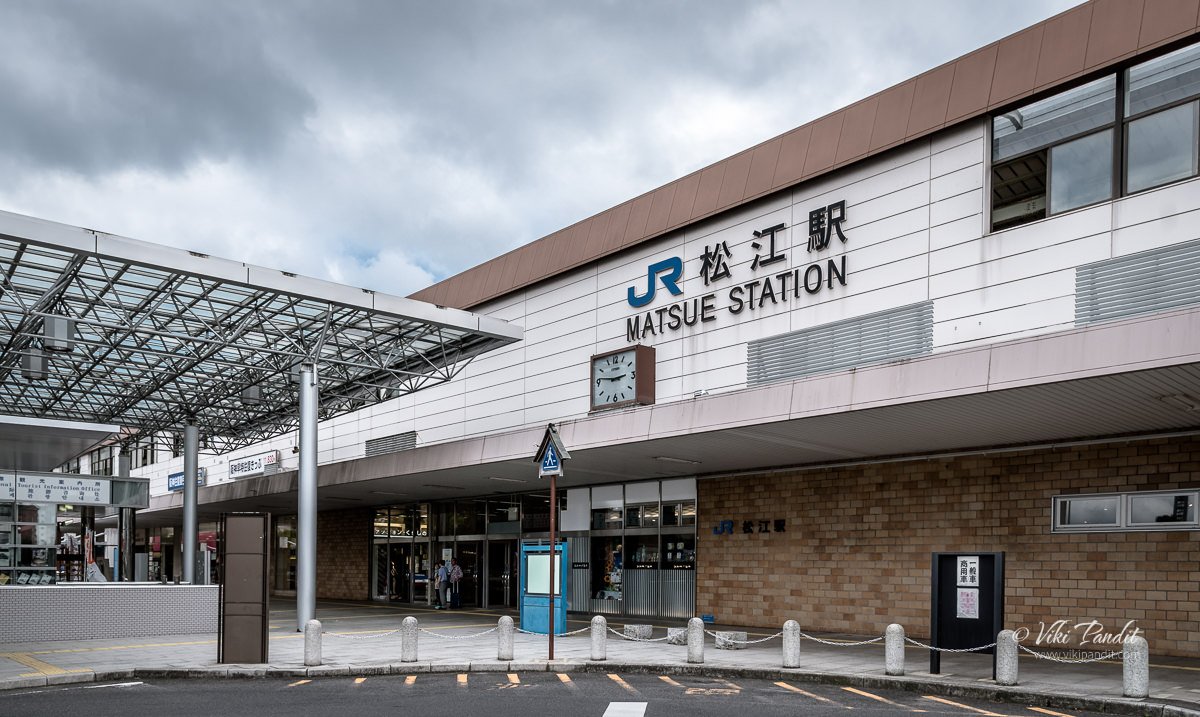

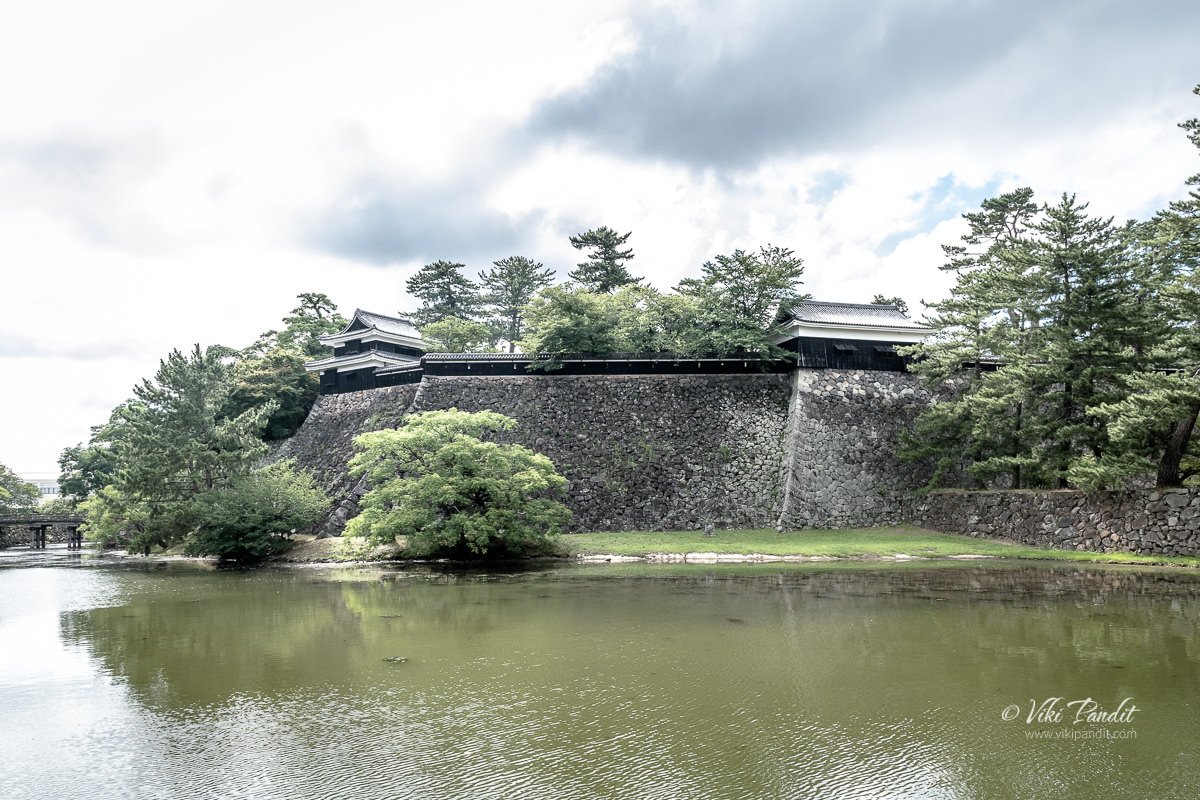
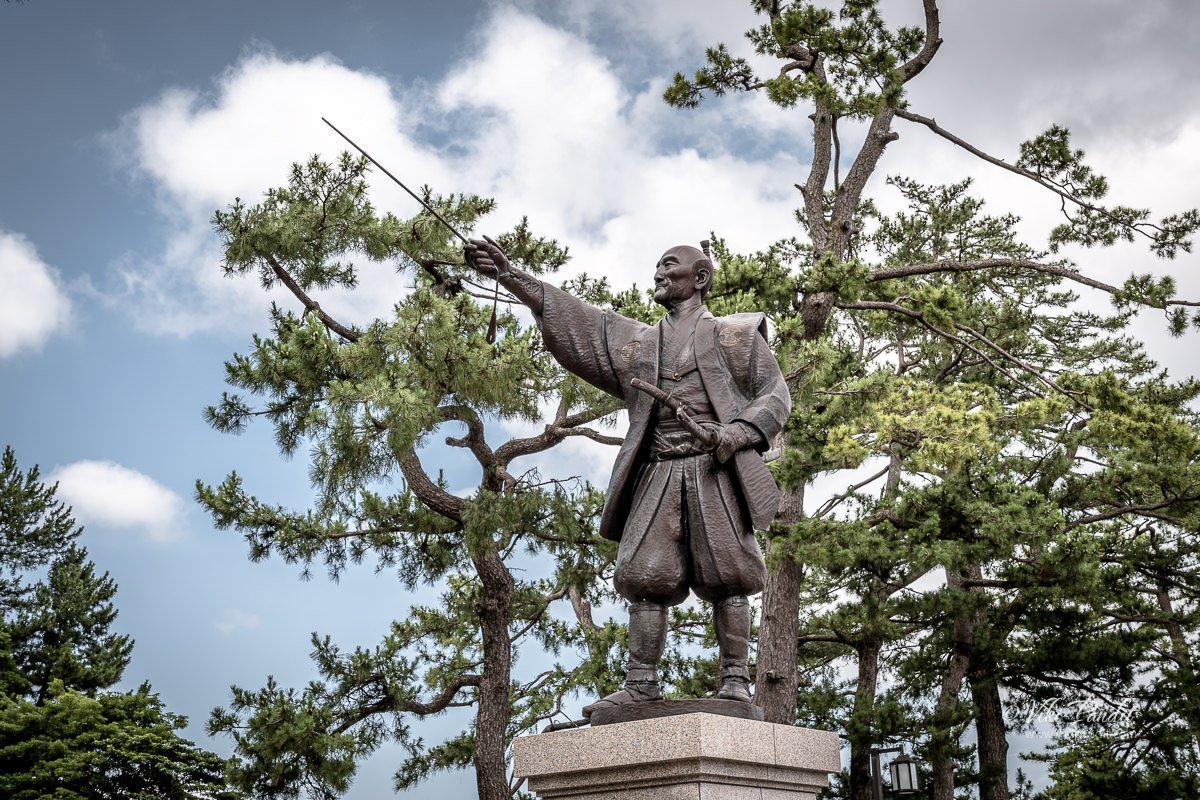

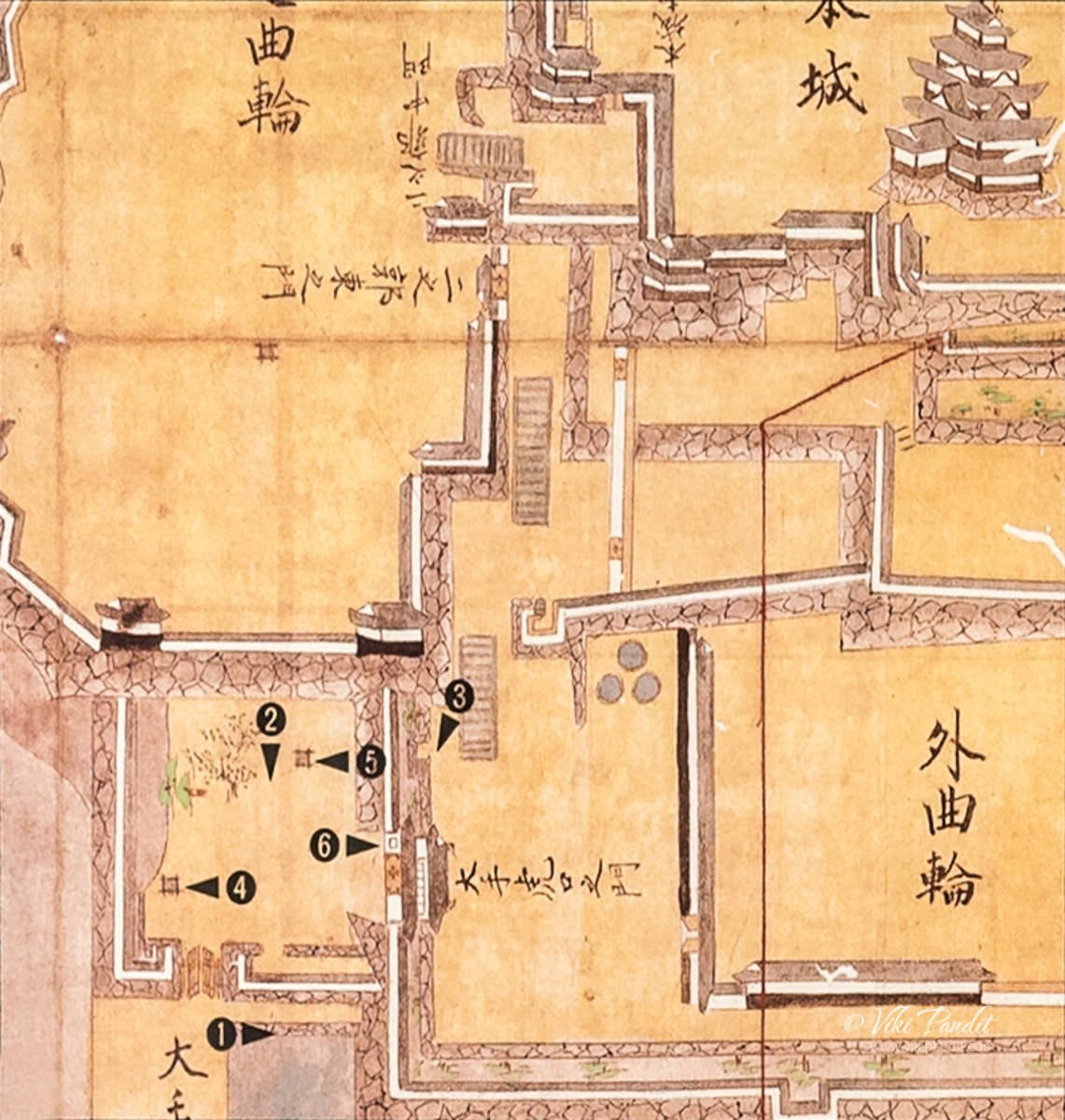
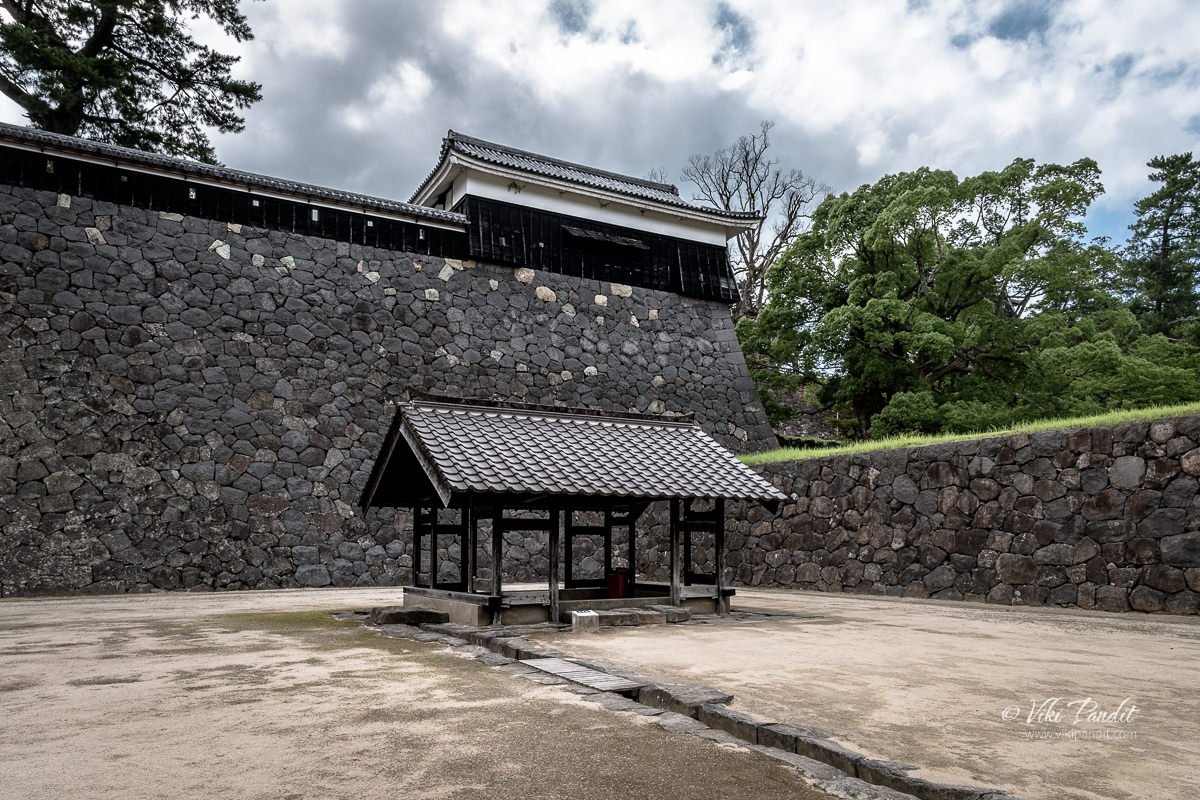

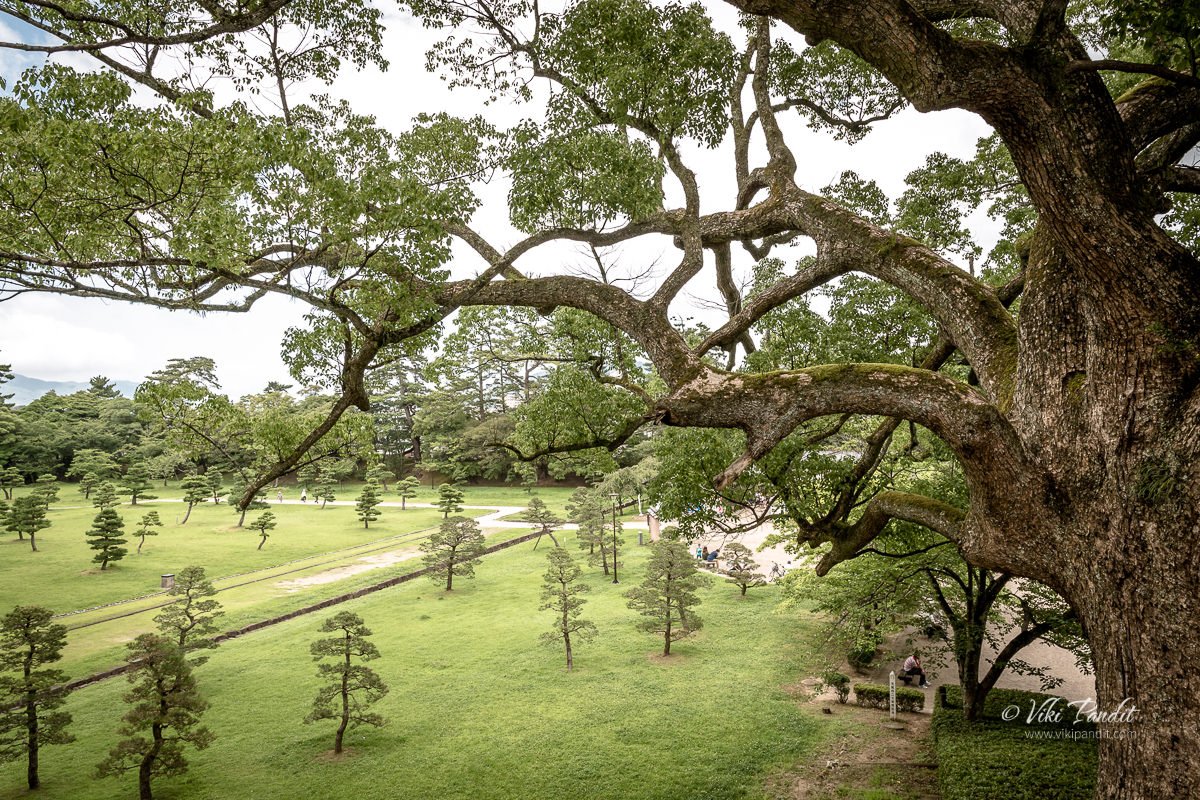


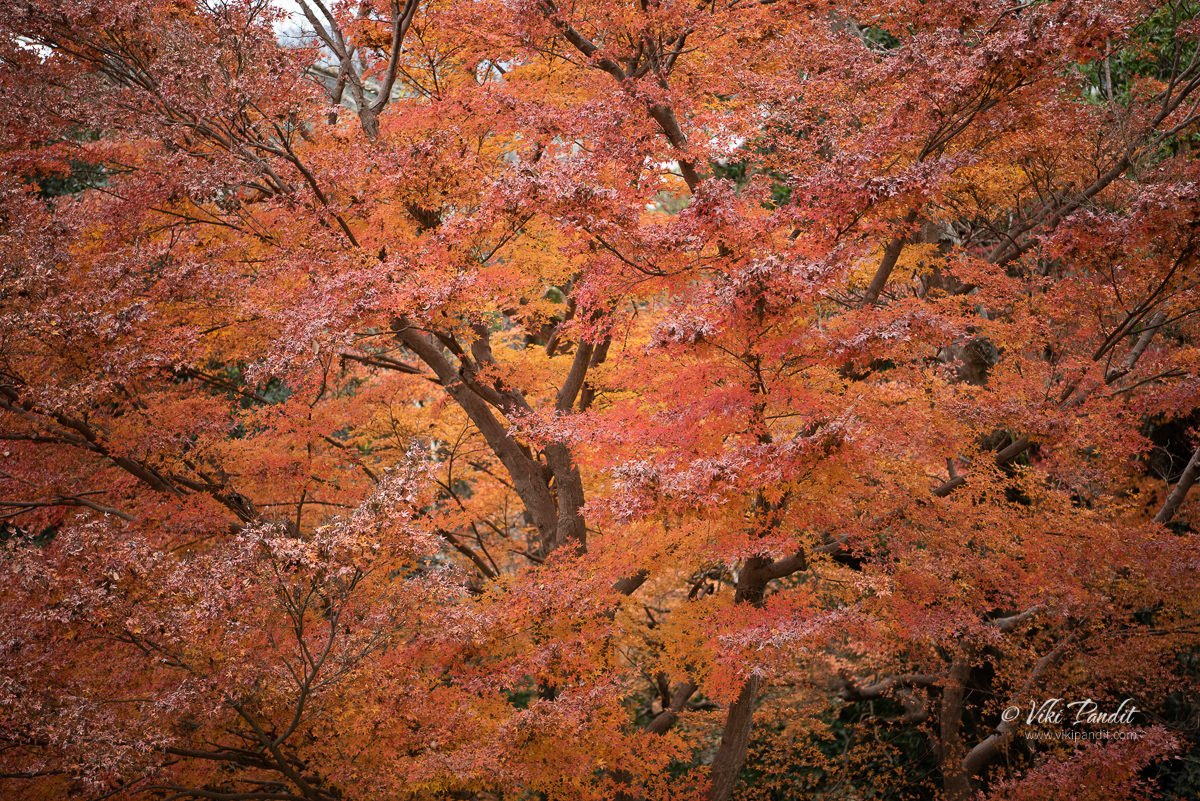

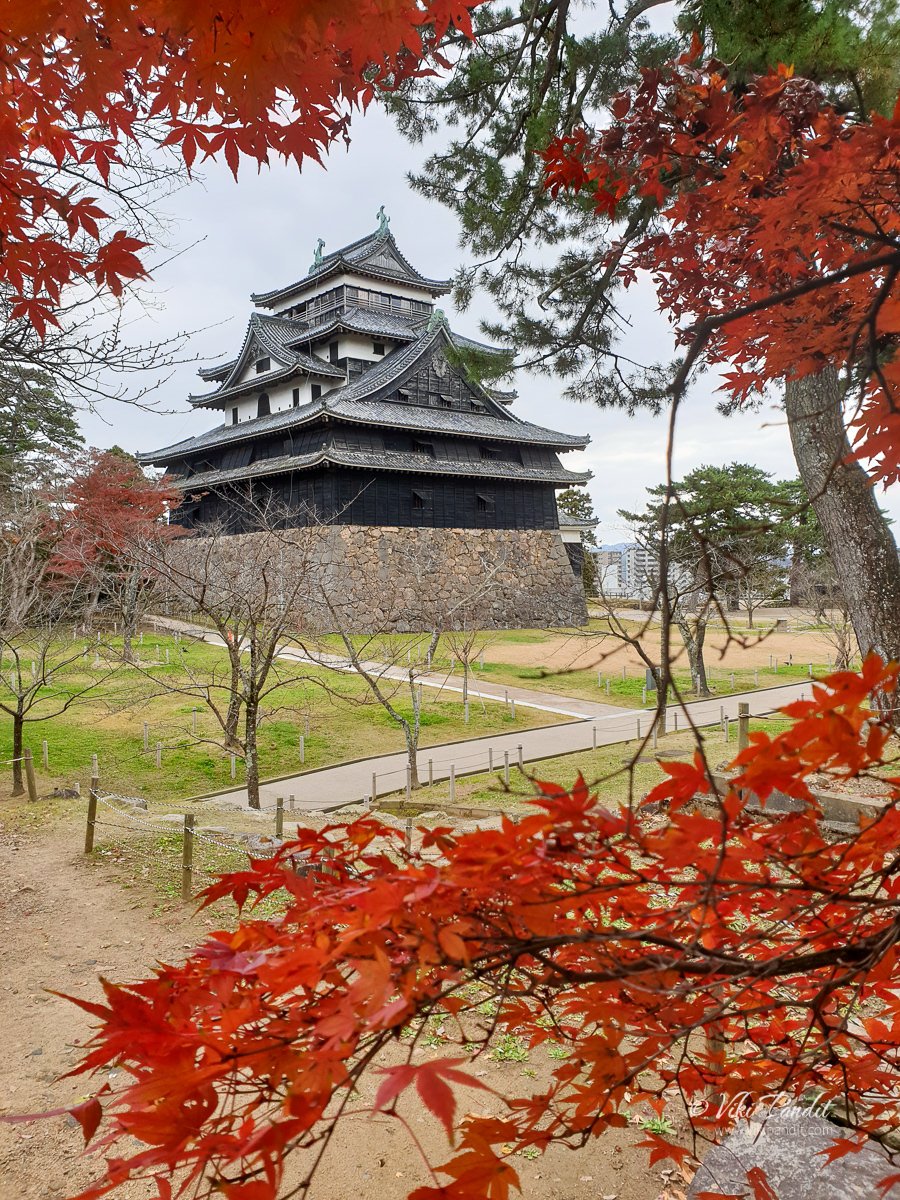


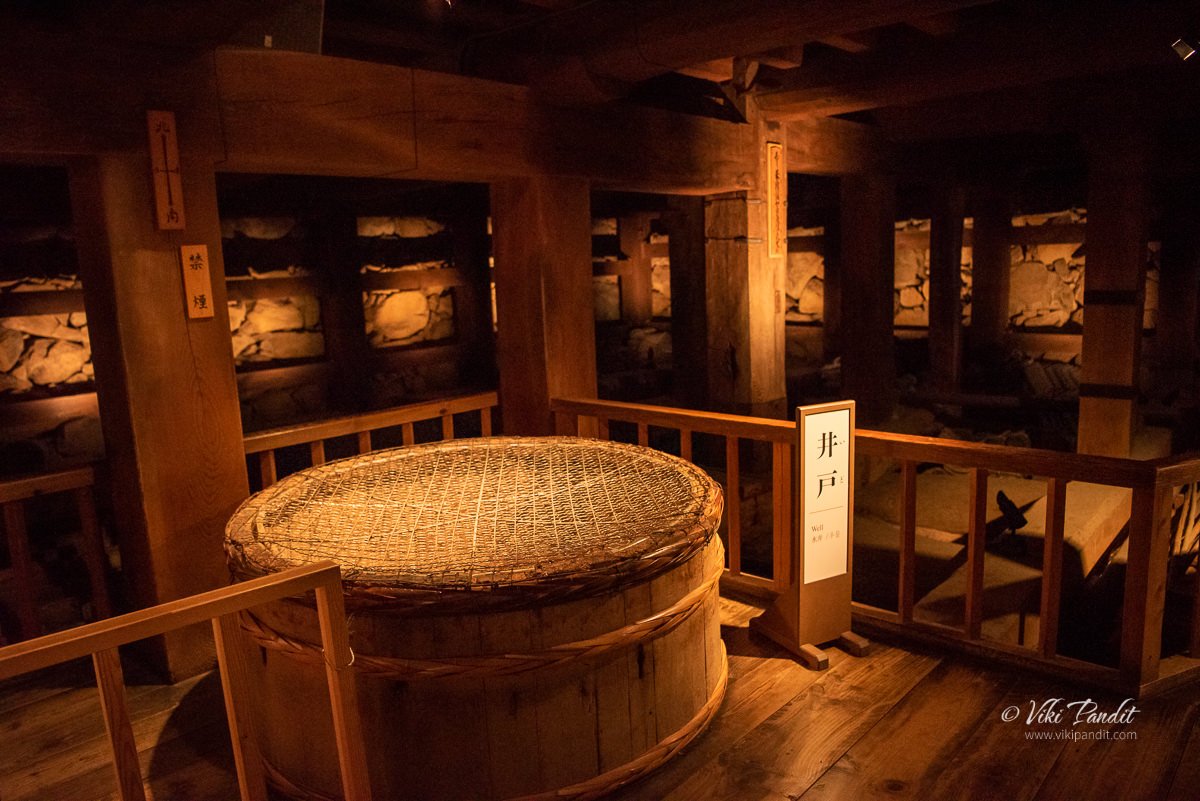
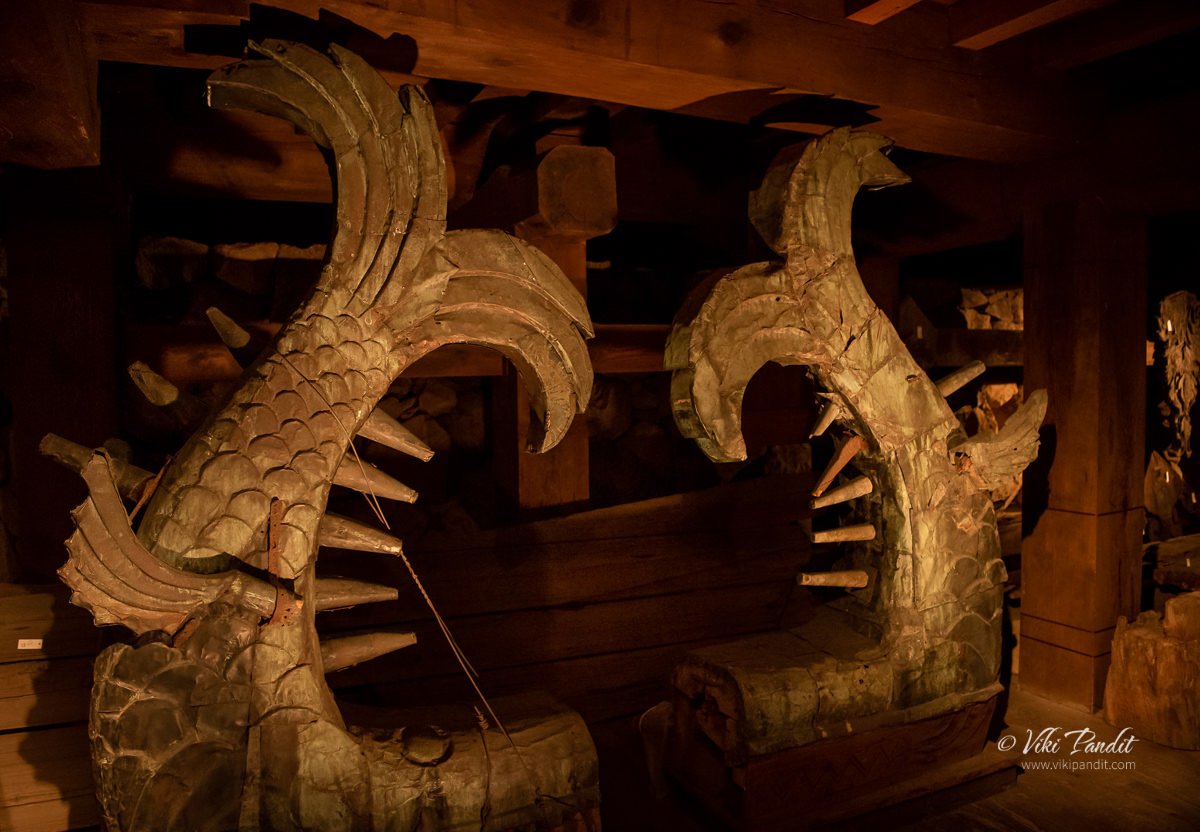
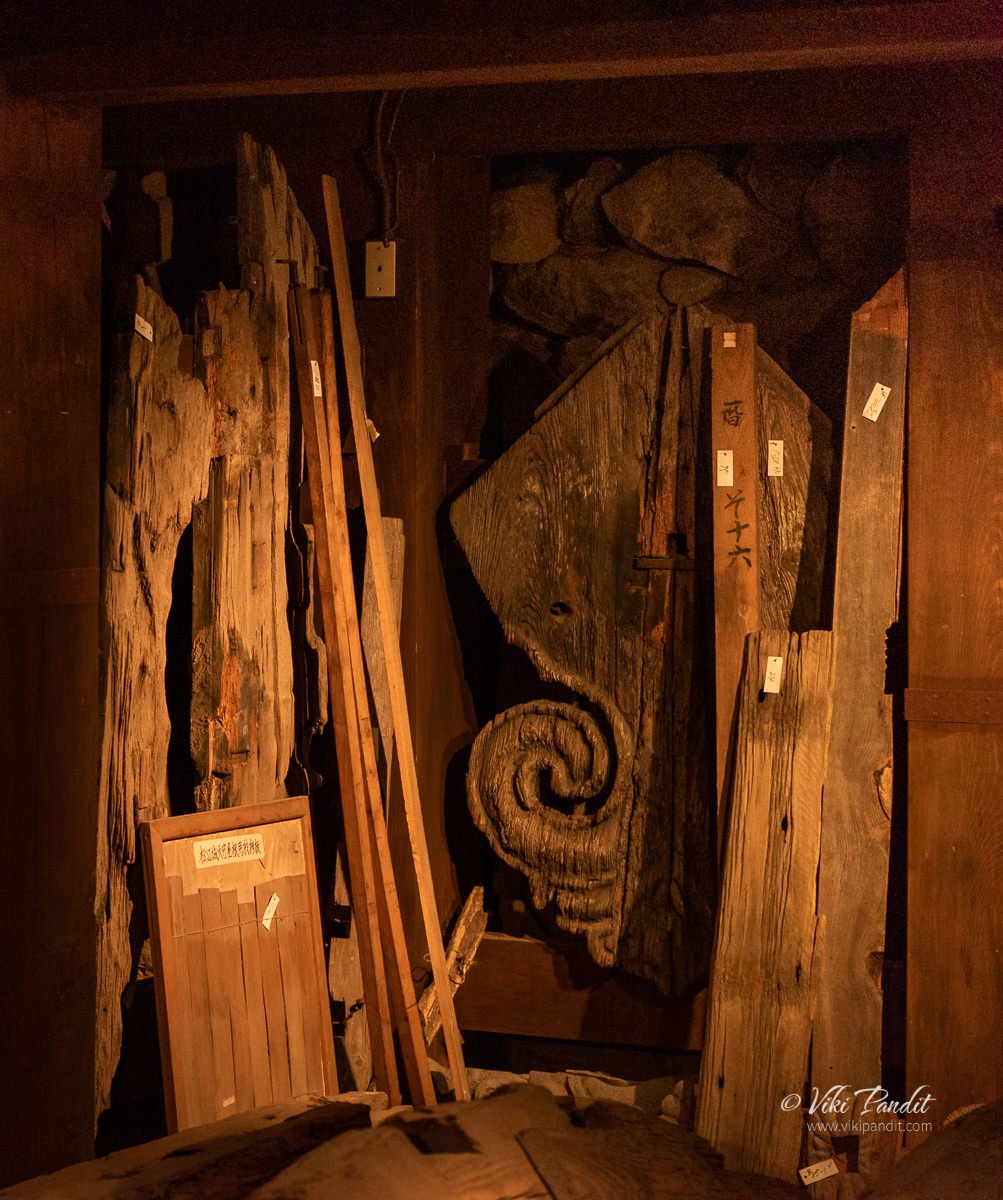

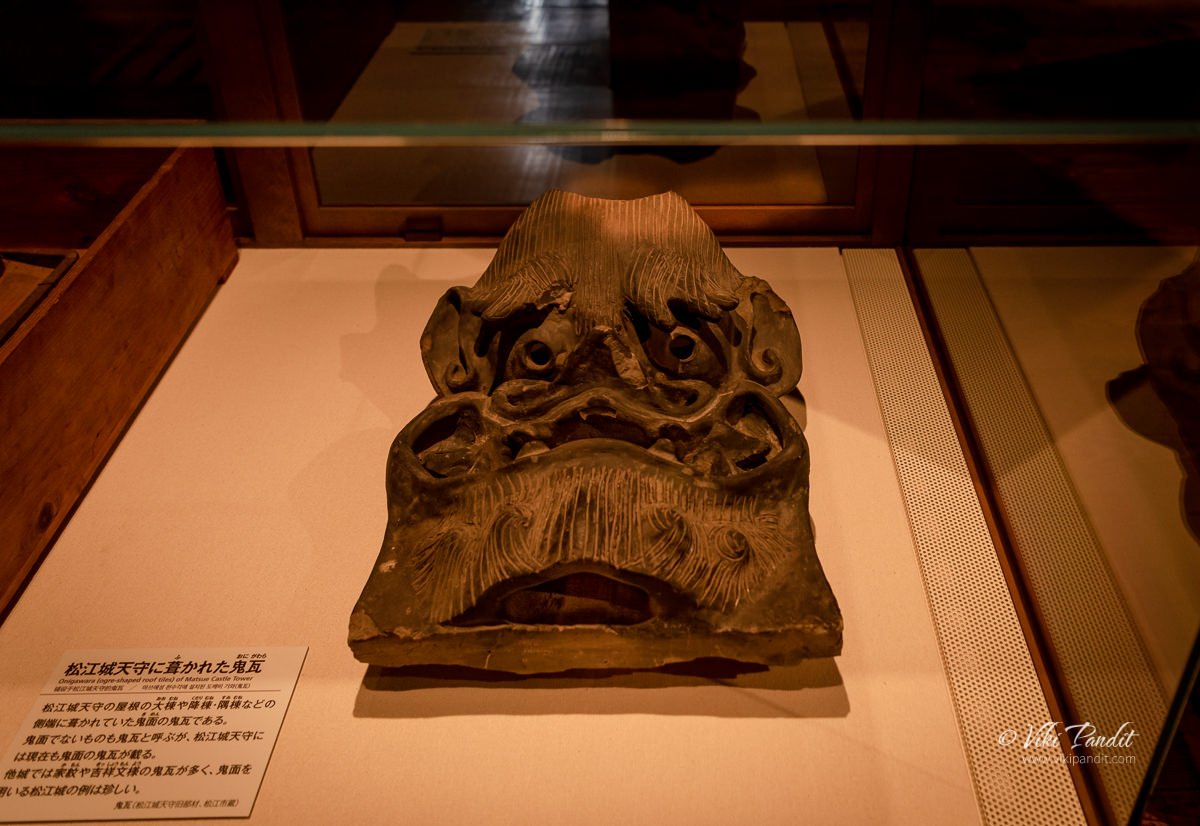
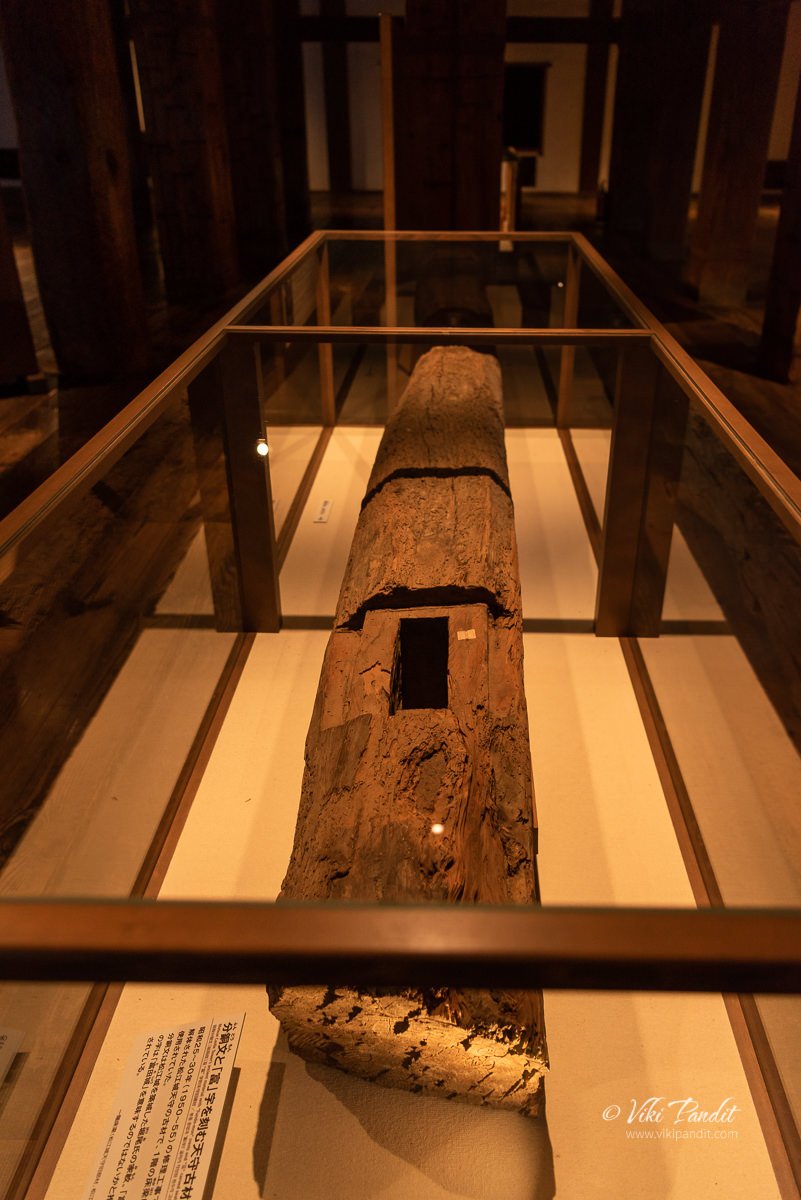
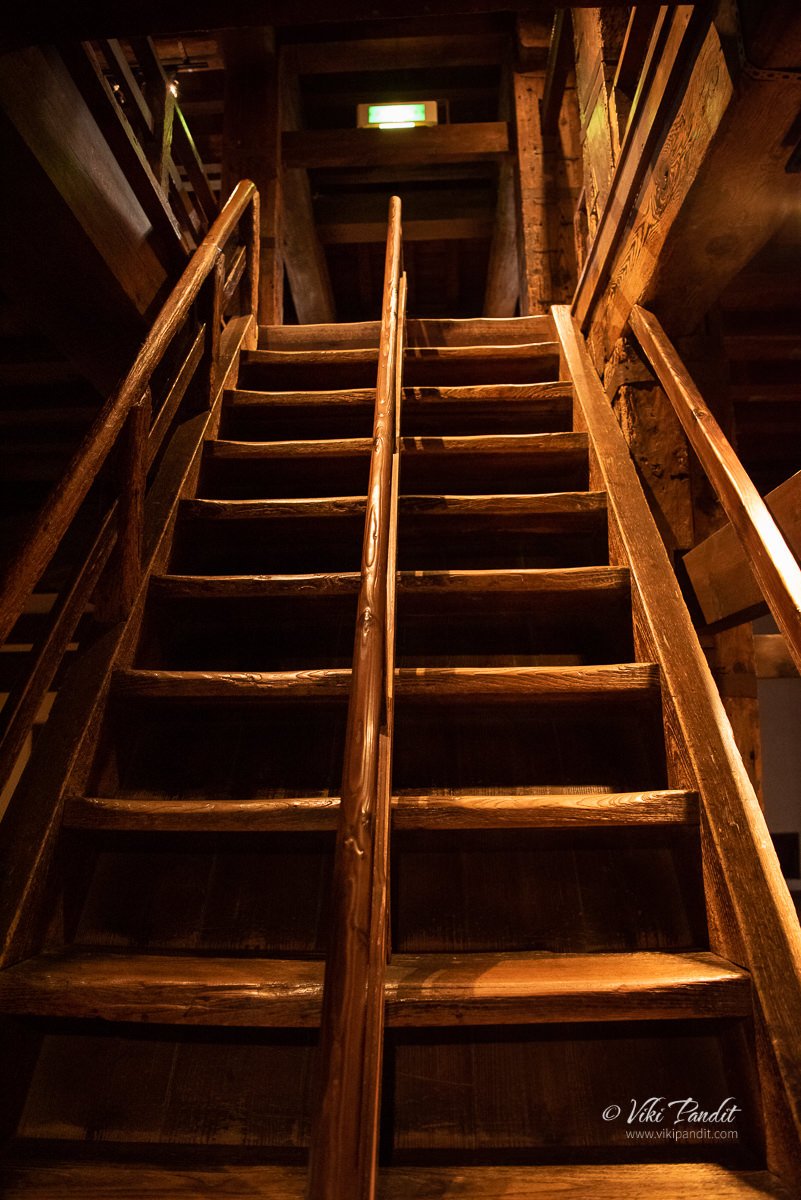

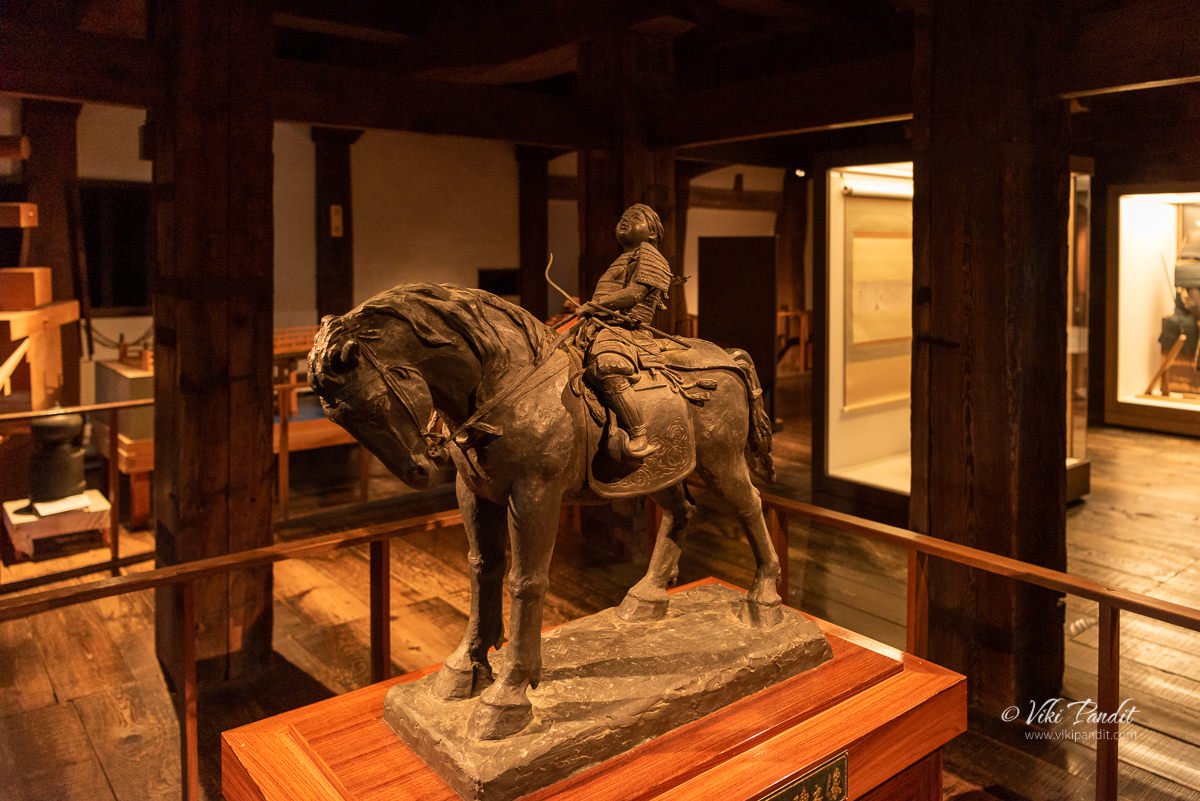



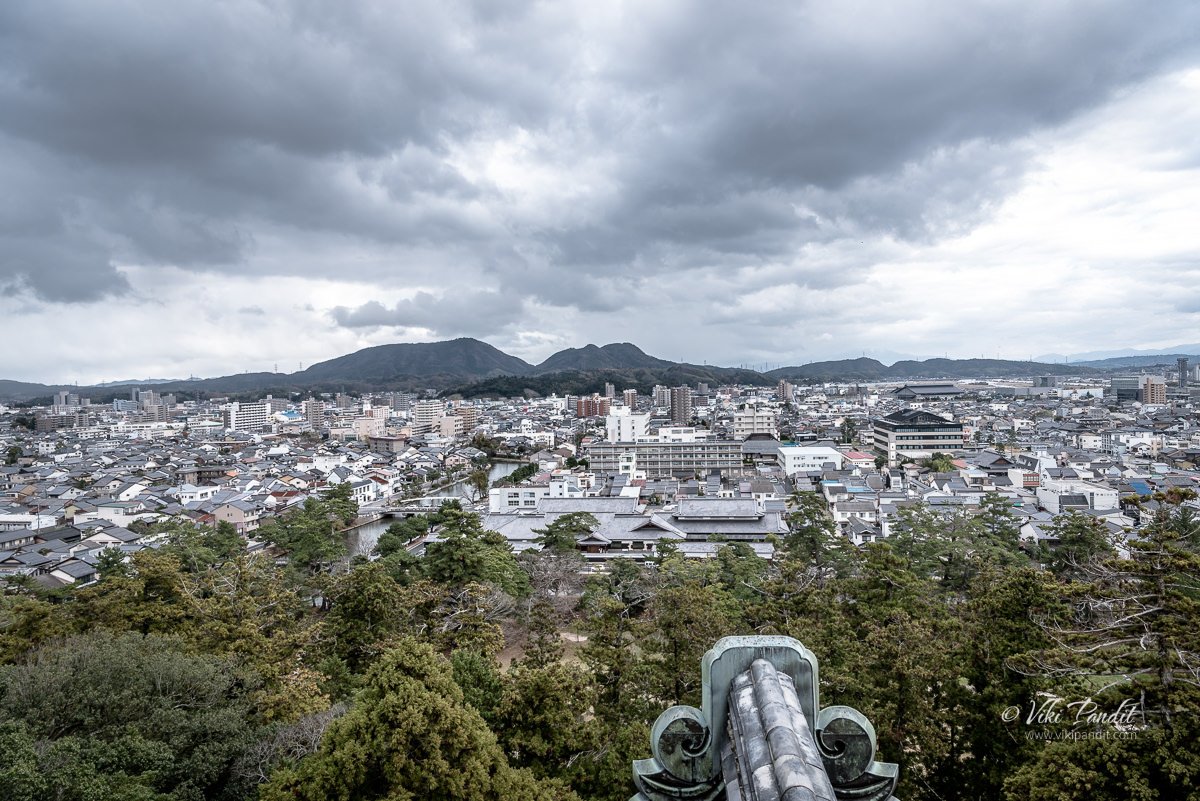
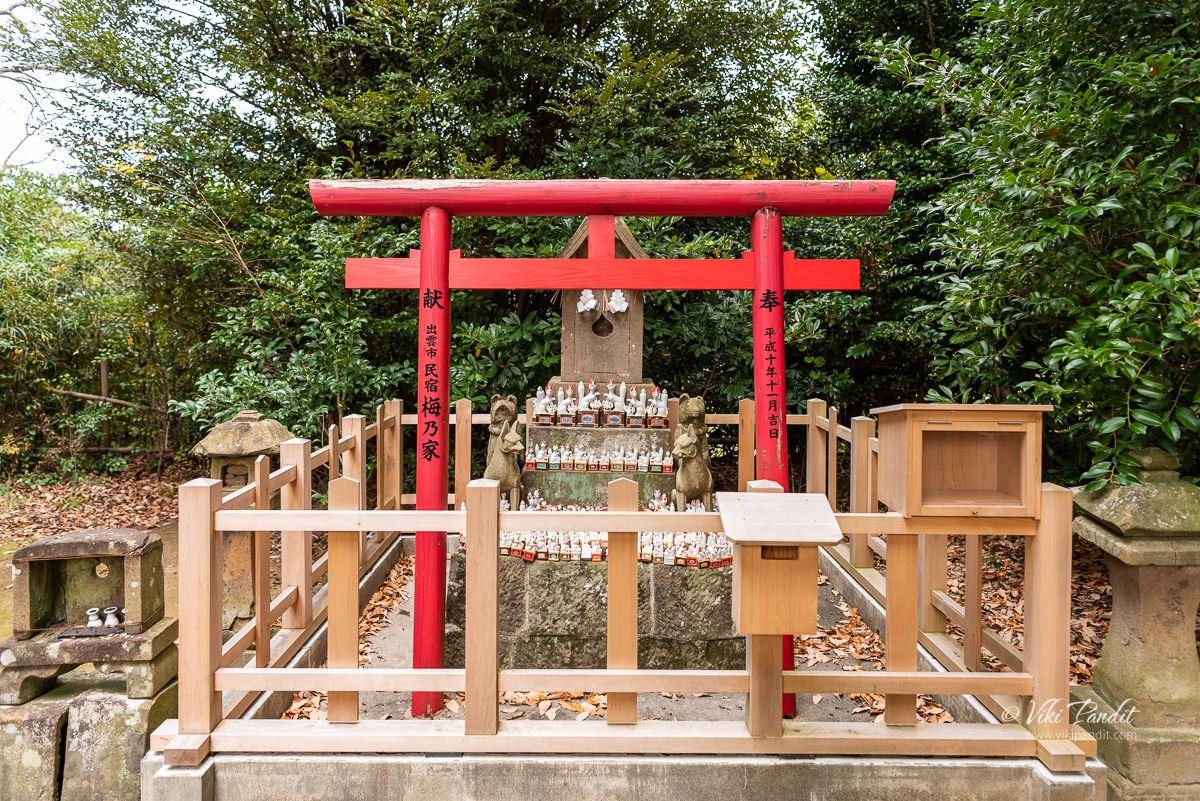

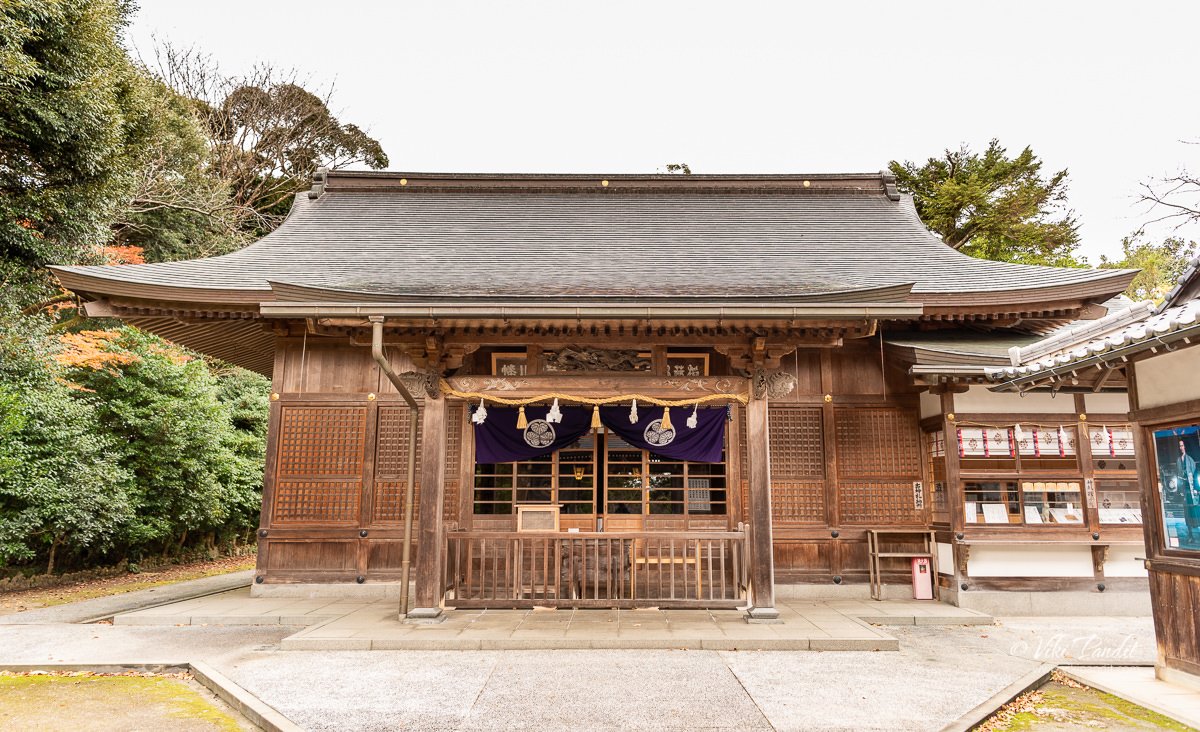
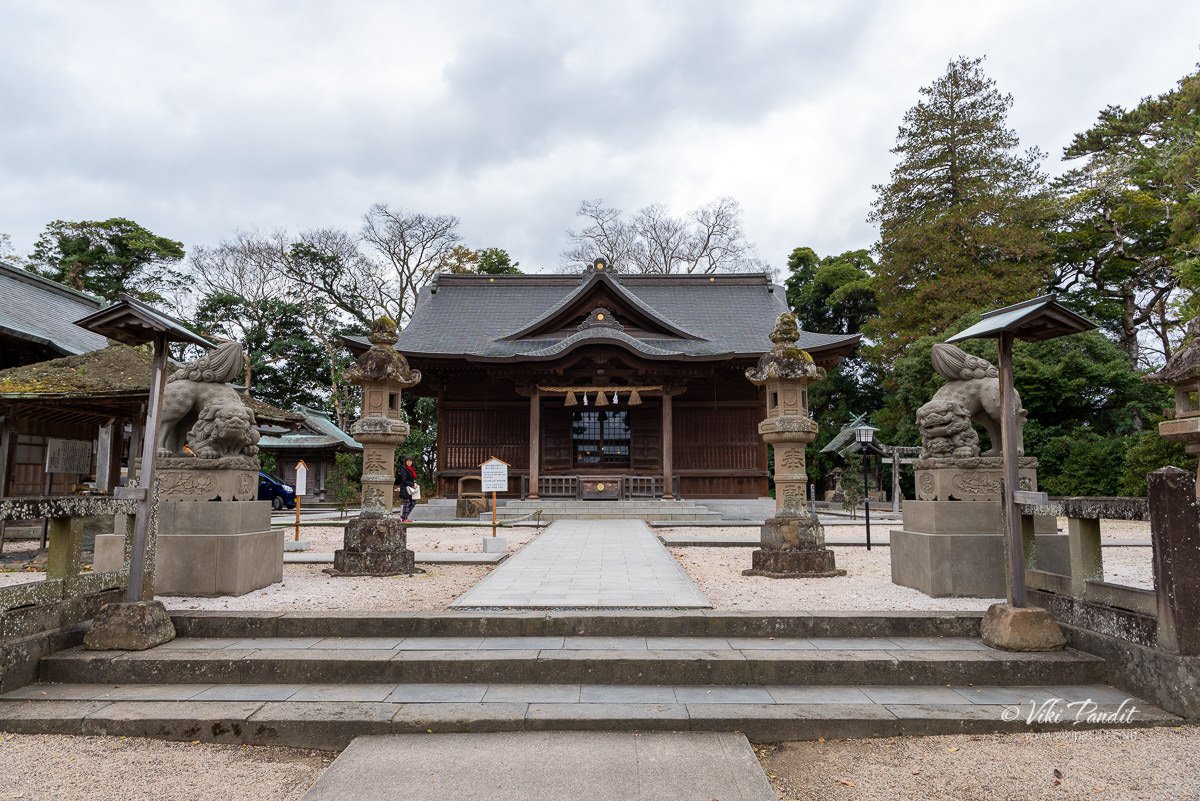
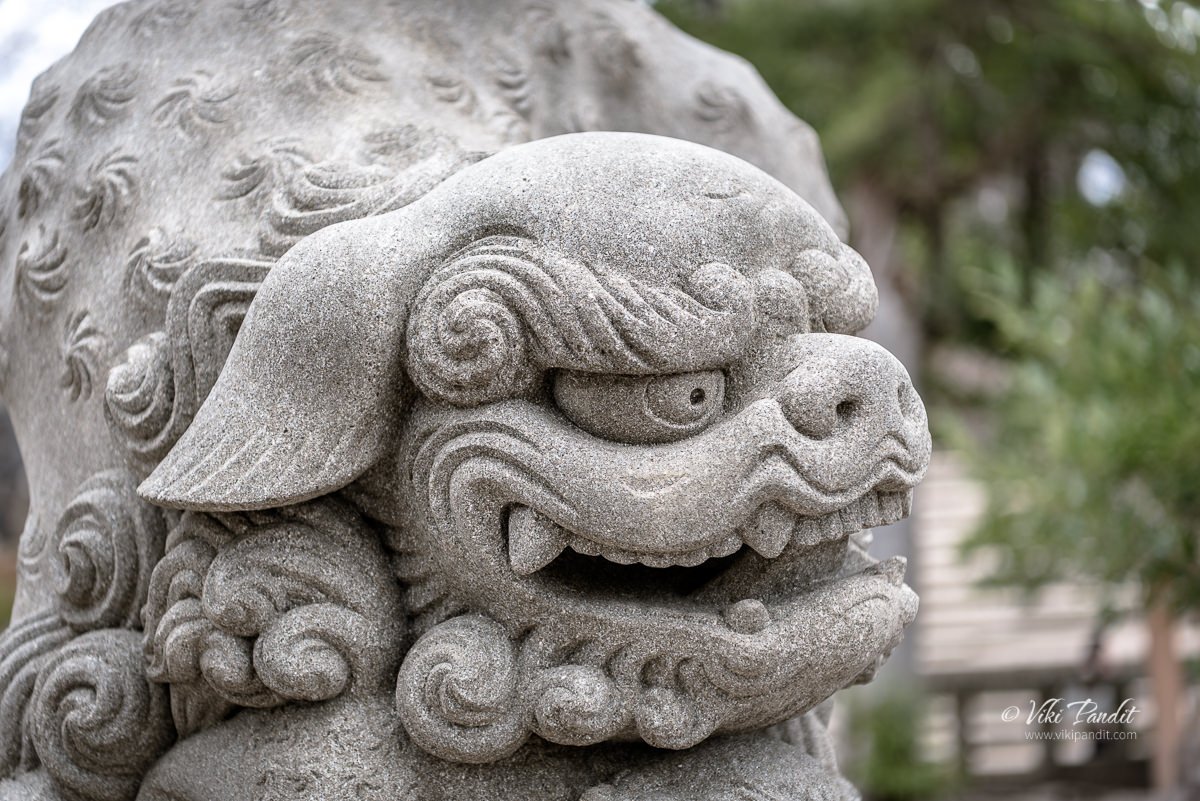


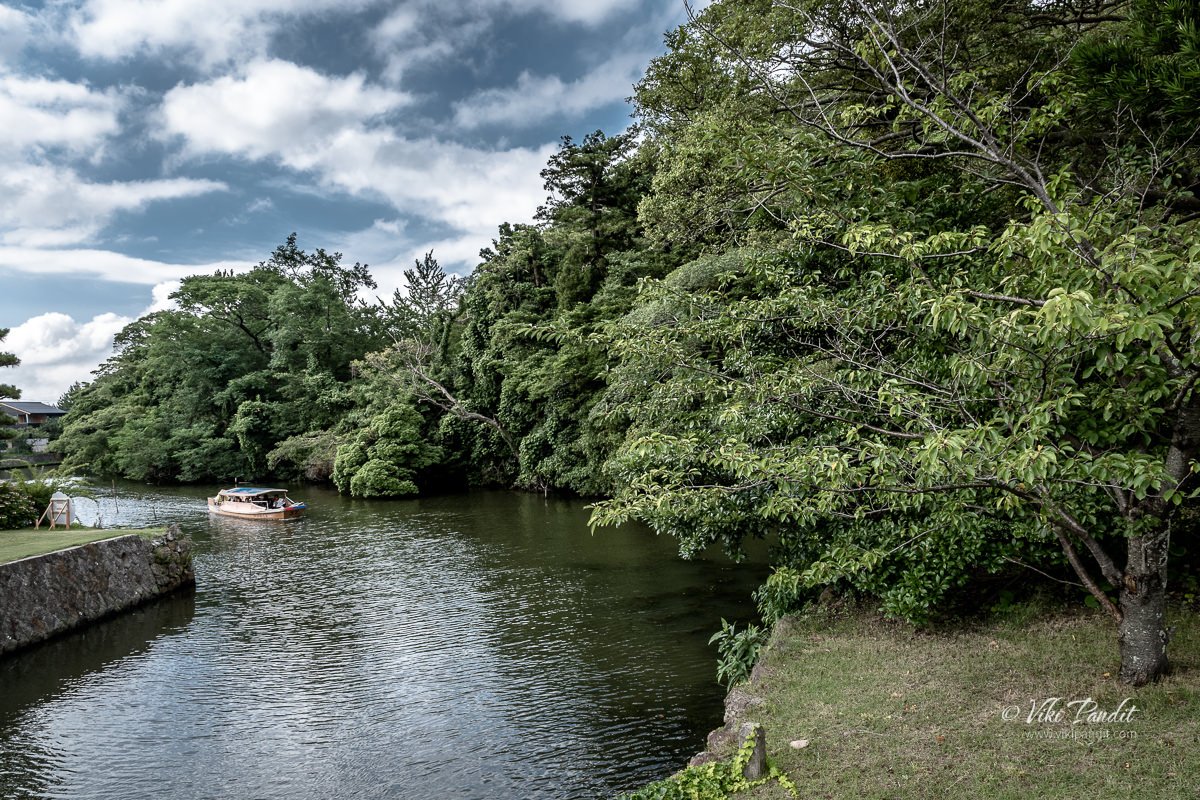
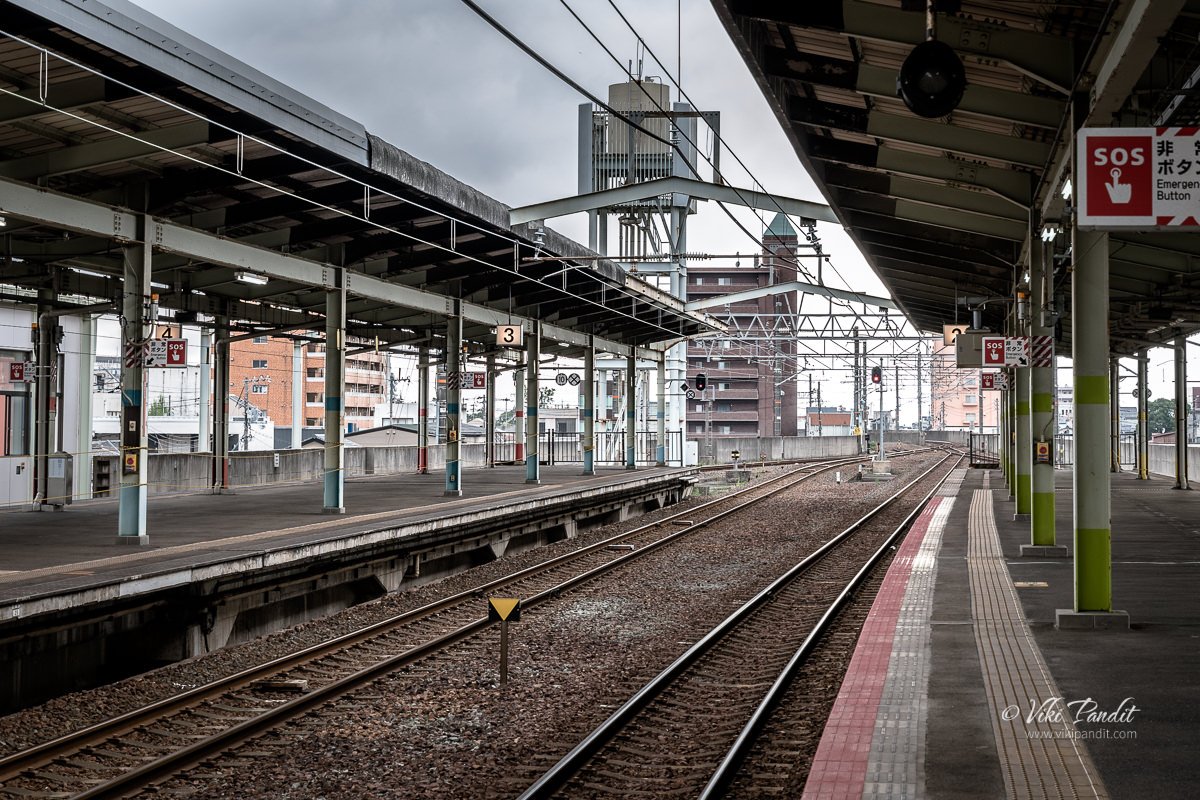
Join the conversation
I’d love to hear your thoughts and experiences. Share your comments, questions, or feedback.
Your voice makes this discussion richer and more meaningful. Whether you have insights to share, questions to ask, or simply want to connect, your contribution is invaluable. Let’s create a space where ideas flow freely and everyone feels welcome to participate.